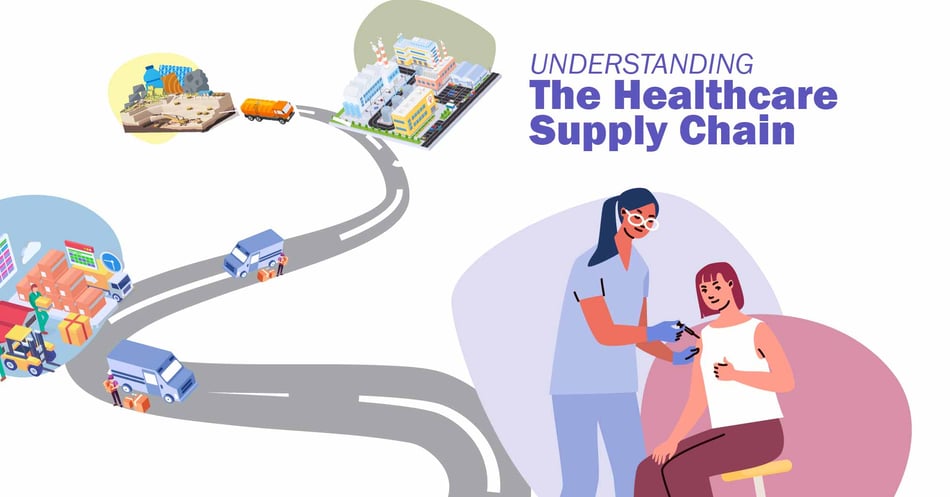The Healthcare Supply Chain - An Overview

As was the case with many healthcare challenges, the COVID-19 pandemic brought public attention to the issue of the healthcare supply chain. A complex network of supplies, manufacturers, distributors, and procurers spans the globe, navigating trade routes across land and sea, as well from "the cloud" to handheld devices. A complete explanation of the healthcare supply chain is not realistic for a single blog post, but today we will endeavor to give an overview for the folks who may not be aware of the scope of the supply chain that makes sure products are there when you need them. In a future post, we will look at where decisions are made to protect the patient from hospital-associated infections (HAIs).
A simple way to break down a supply chain has four basic links. Let's consider them starting from the end user and working our way back. We will use a standard syringe as an example.
- Consumer: This is the end-user, the last one to pay for the product (or have that product paid for on their behalf by a third party such as insurance or Medicare). 💉This is the person who receives an injection from the syringe.
- Provider: The facility, doctor, or pharmacy that sells the product for the last time, directly to the consumer. You could consider providers resellers on some level, as they purchase the product in advance and then resell it to the consumer. 💉This is the entity that paid for the bulk order of syringes and bills the patient for its use.
- Distributor: A distributor sells the products to the facility, hospital, or pharmacy. Often, the healthcare purchaser will negotiation large contracts with distributors for an array of products, all at once. A facility will have distributors for a product category (for example, furniture), for specific brands (General Electric), and in some cases, a one-stop-shop distributor for everything from software to syringes. 💉This is the medical supplier who sold the bulk order of syringes to the facility.
- Manufacturer: Every product has to be made somewhere, and that is where the manufacturer comes into play. Some manufacturers are exclusive to their line of products, aligned with one brand or one type of product. Other manufacturers are subcontracted factory plants engaged by brands to manufacture their products. These manufacturers may produce the same category of items (such as syringes or gloves) for several companies, each to their own specifications. 💉In the case of the syringe, the manufacturer is the physical plant that extruded the plastic and fabricated the steel into the needle, assembled the product and packaged it.
- Supplier: Every product is made from materials that have to be sourced and brought to the factory, and this job falls to the suppliers. A manufacturer maintains a network of suppliers that can provide the raw materials they require, in the form and to their exact specifications. Some examples of raw materials are rubber, latex, chemicals, cotton fabric, magnets, lasers, optics, springs, sheet metal, biologics, and polymers of every conceivable type. 💉For the syringe, this would be the entity supplying the polymers, a separate entity that refines the medical-grade steel, and another entity that supplies the paper and plastic film for packaging.
Interruptions along the supply chain are normal, as this complex network relies on many moving parts and unpredictable events. If the supply chain is proactive, however, the consumer will not be negatively impacted as each step along the way prepared for inevitable delays by stocking up (inventory), prioritizing orders (filling certain orders first), and having alternate production options (plants that can be hired to do a short run of the product). Because there can be significant competition when the supply chain is overwhelmed, the federal government can get involved to set priorities on who gets what first based on need rather than purchasing power.
We hope this quick introduction gave you a new perspective on the complexity of the healthcare supply chain. In a future post, we will look at the unique characteristics of the infection control supply chain, and where decision-makers can make choices that lead to greater patient safety.
![EOScu Logo - Dark - Outlined [07182023]-01](https://blog.eoscu.com/hubfs/Eoscu_June2024/Images/EOScu%20Logo%20-%20Dark%20-%20Outlined%20%5B07182023%5D-01.svg)

![[infographic] The Healthcare Supply Chain Download and share!](https://no-cache.hubspot.com/cta/default/216314/interactive-178382222874.png)



